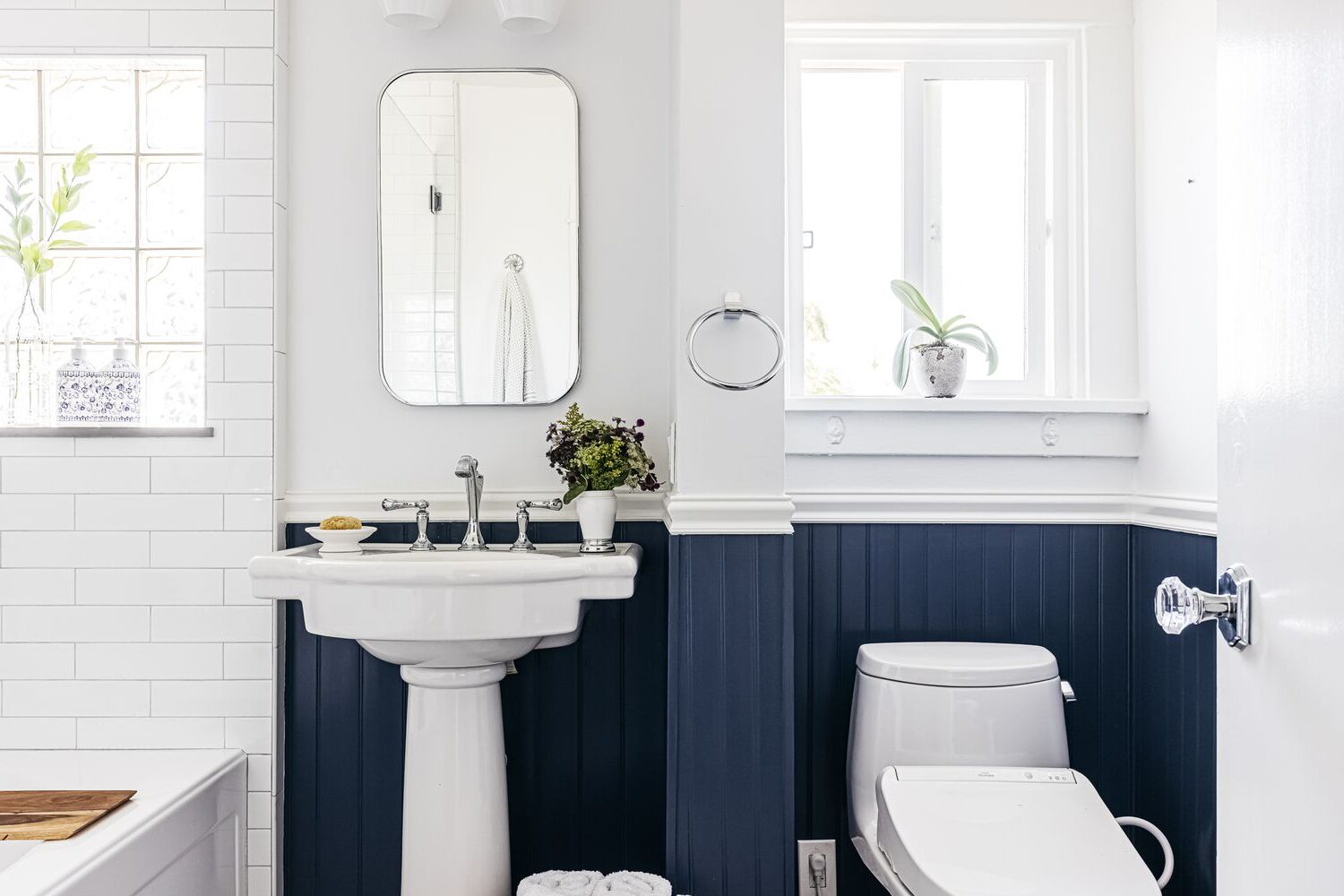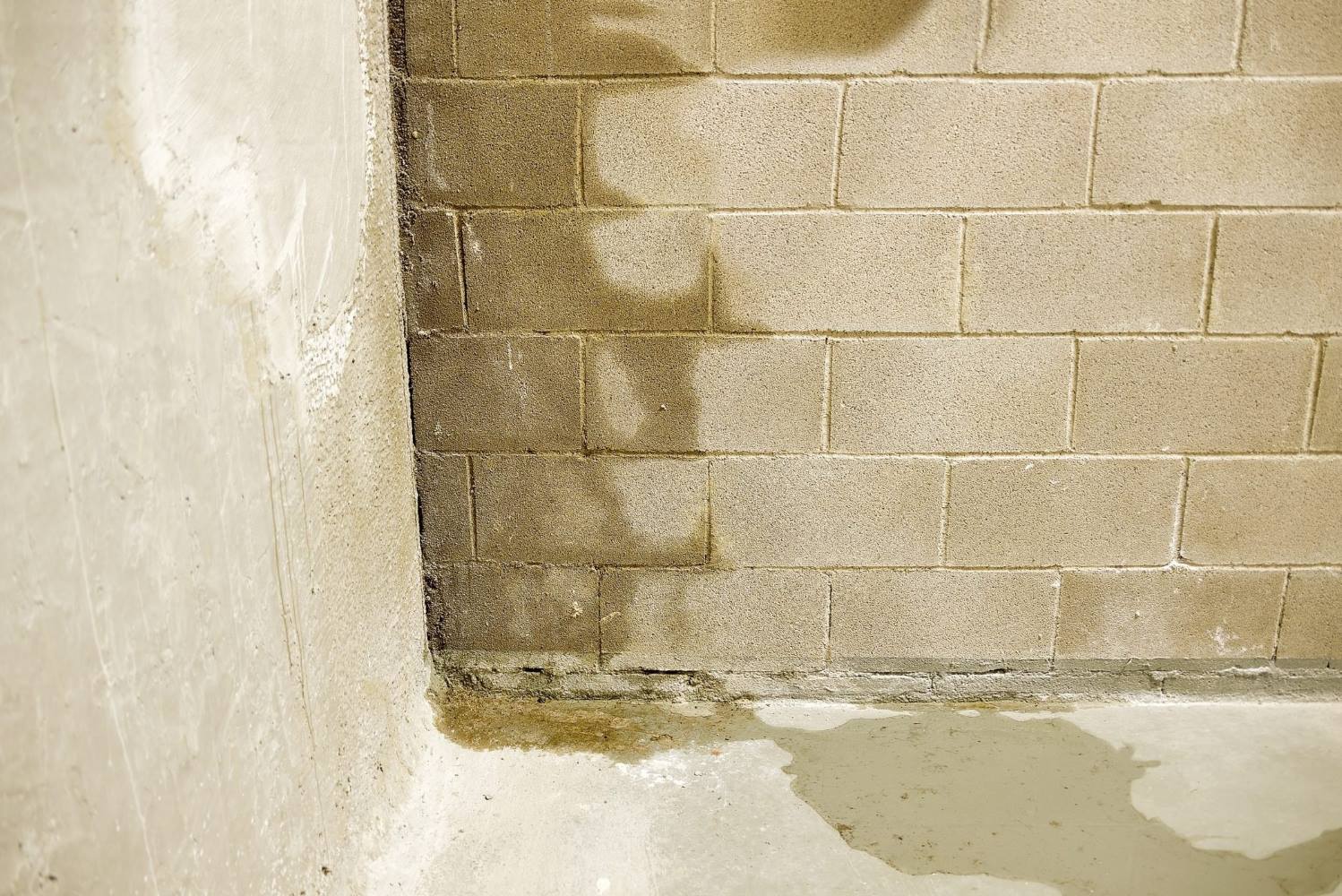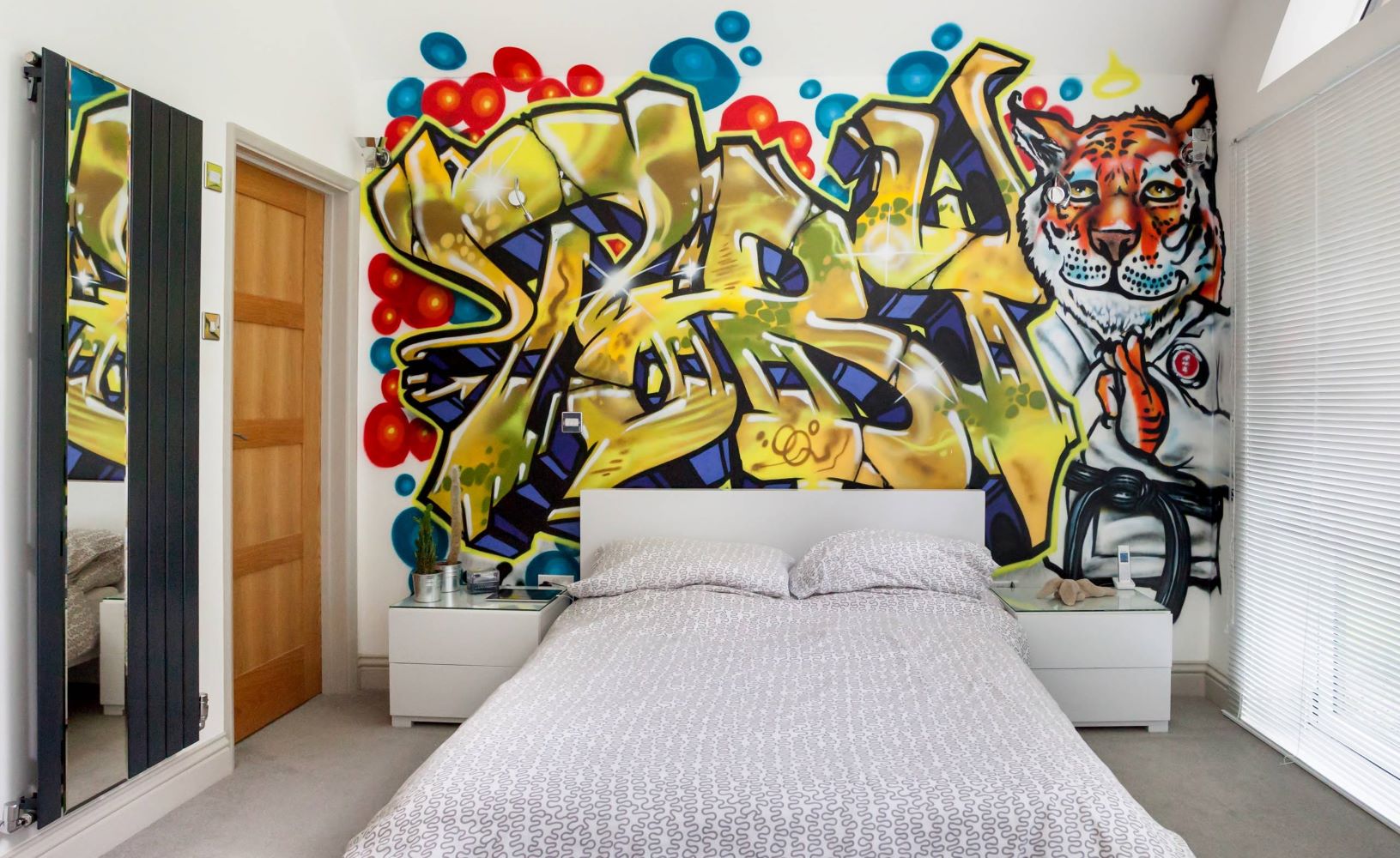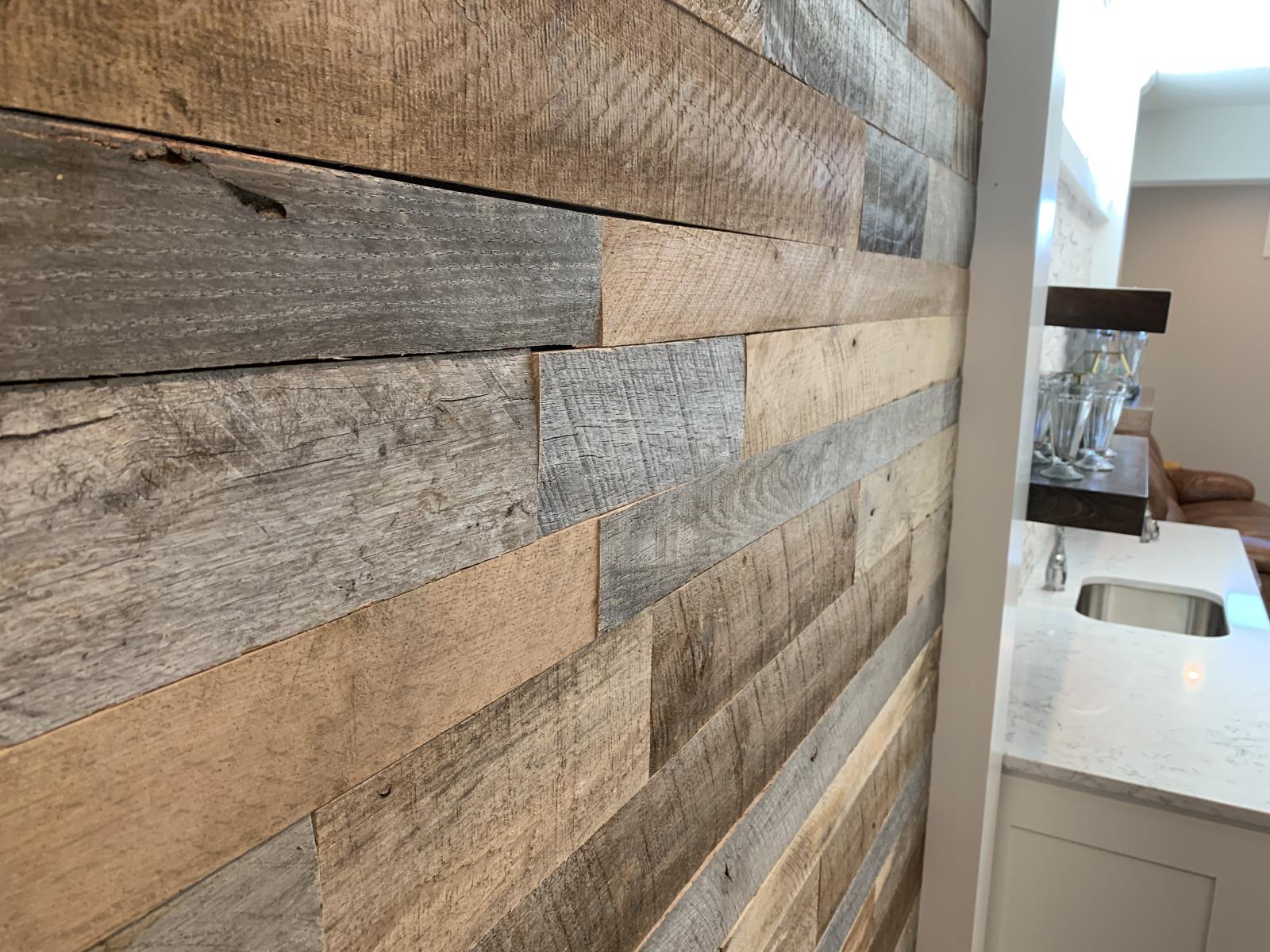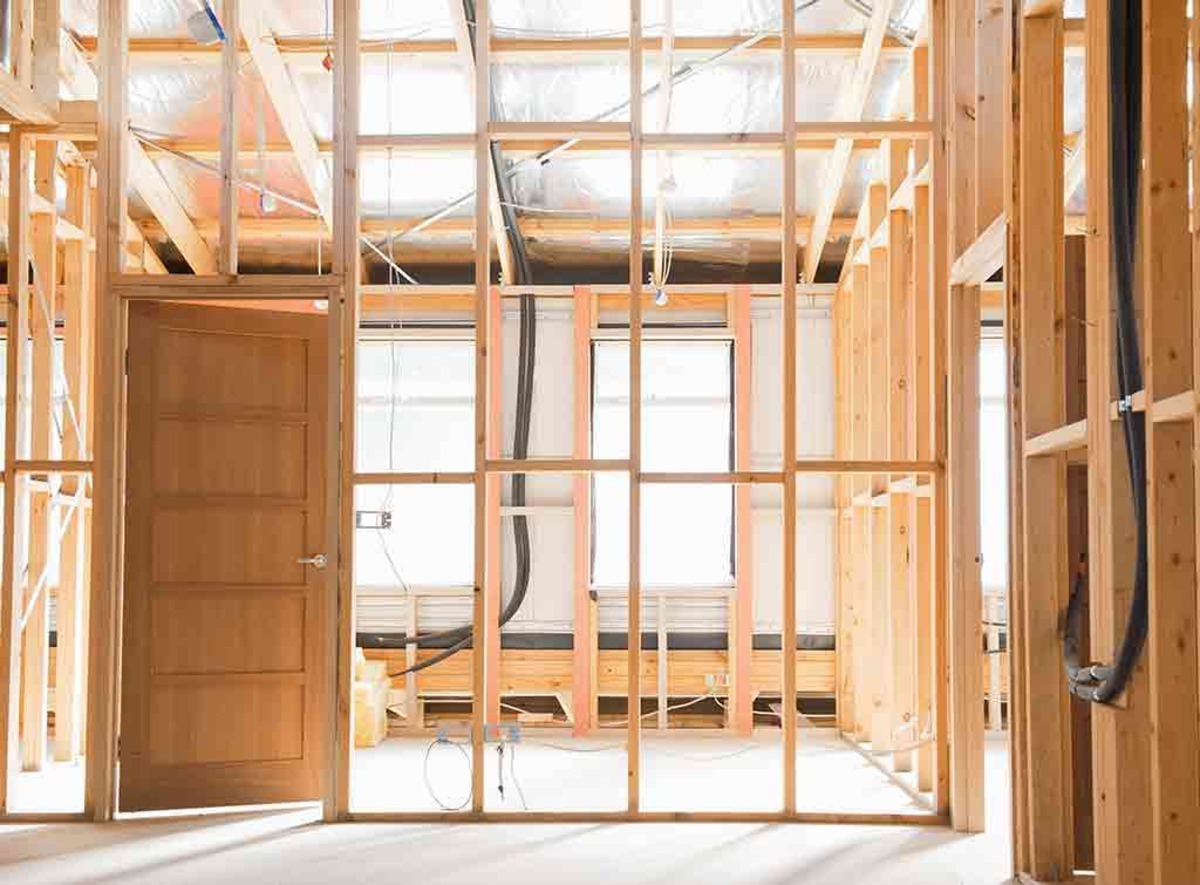Home>Create & Decorate>DIY & Crafts>How To Build A Wall
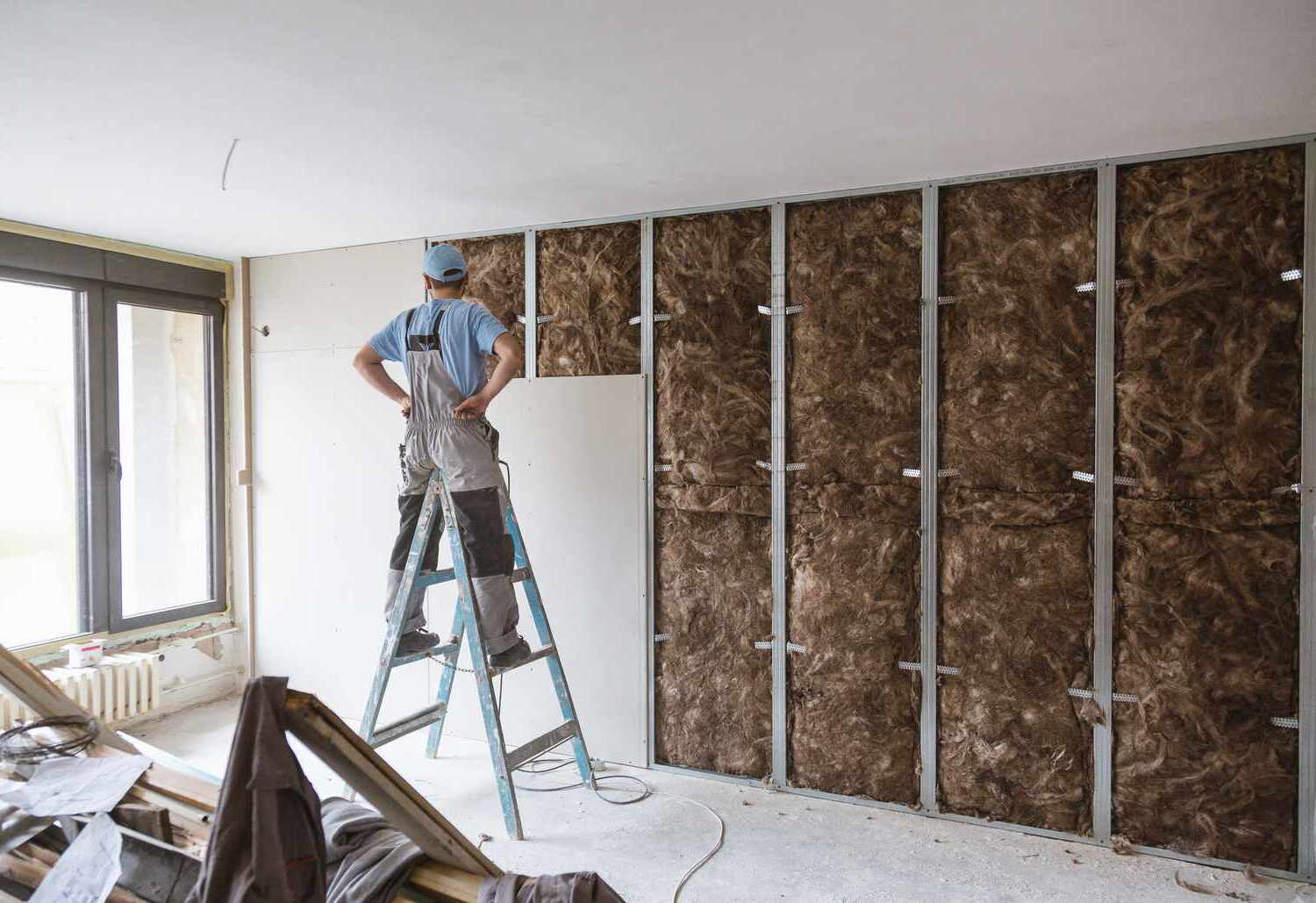

DIY & Crafts
How To Build A Wall
Published: February 23, 2024

Senior Editor in Create & Decorate, Kathryn combines traditional craftsmanship with contemporary trends. Her background in textile design and commitment to sustainable crafts inspire both content and community.
Learn how to build a wall with our step-by-step DIY & Crafts guide. Create a sturdy and stylish wall with our expert tips and techniques. Start your project today!
(Many of the links in this article redirect to a specific reviewed product. Your purchase of these products through affiliate links helps to generate commission for Twigandthistle.com, at no extra cost. Learn more)
Introduction
Building a wall can serve both practical and aesthetic purposes, whether you're looking to create a boundary for your garden, add a retaining wall to prevent soil erosion, or enhance the visual appeal of your outdoor space. Constructing a wall may seem like a daunting task, but with the right guidance and a bit of elbow grease, it can be a rewarding DIY project.
In this comprehensive guide, we will walk you through the step-by-step process of building a sturdy and visually appealing wall. From gathering the necessary materials and tools to adding the finishing touches, you'll gain the knowledge and confidence to tackle this project with ease.
Whether you're a seasoned DIY enthusiast or a novice looking to expand your skills, this guide will provide valuable insights and practical tips to help you successfully build a wall that meets your specific needs. So, roll up your sleeves, grab your tools, and let's embark on this fulfilling journey of creating a functional and beautiful wall for your outdoor space.
Read more: How to Build DIY Wall Panels
Step 1: Gather Materials and Tools
Before diving into the construction process, it's crucial to gather all the necessary materials and tools to ensure a smooth and efficient workflow. Here's a comprehensive list of items you'll need:
Materials:
- Bricks or Blocks: Select high-quality bricks or concrete blocks that are suitable for the intended purpose and climate conditions.
- Mortar Mix: Choose a mortar mix that is compatible with the bricks or blocks you've selected. Opt for a high-quality mortar that offers strong adhesion and durability.
- Gravel: Use gravel for creating a sturdy and stable foundation for the wall.
- Sand: High-quality sand is essential for mixing with the mortar to achieve the right consistency.
- Concrete: If you're building a retaining wall, you may need concrete for added stability and strength.
- Reinforcement Bars (Rebars): For larger walls or retaining walls, reinforcement bars may be necessary to enhance structural integrity.
Tools:
- Trowel: A trowel is essential for applying mortar to the bricks or blocks during the construction process.
- Spirit Level: Ensure that your wall is straight and level by using a spirit level throughout the construction.
- Shovel: Use a shovel for digging and moving gravel, sand, and soil during the foundation preparation.
- Wheelbarrow: A wheelbarrow comes in handy for transporting heavy materials such as gravel, sand, and bricks.
- Hammer and Chisel: These tools are useful for cutting bricks or blocks to fit specific dimensions.
- Safety Gear: Prioritize safety by wearing gloves, safety goggles, and a dust mask to protect yourself during the construction process.
By gathering these materials and tools in advance, you'll be well-prepared to commence the construction of your wall without unnecessary interruptions. With everything at your disposal, you can proceed to the next step with confidence and efficiency.
Step 2: Prepare the Foundation
The foundation serves as the backbone of your wall, providing stability and support to ensure its longevity and structural integrity. Proper preparation of the foundation is essential for withstanding external forces and maintaining the overall strength of the wall. Here's a detailed breakdown of the crucial steps involved in preparing the foundation for your wall:
Read more: How to Build DIY Bathroom Wall Panels
Clear the Area
Begin by clearing the designated area where the wall will be constructed. Remove any debris, vegetation, or obstacles that may impede the construction process. Use a shovel to excavate the area, ensuring that the ground is level and free from any obstructions.
Mark the Layout
Using stakes and string, mark the layout of the wall to define its boundaries and ensure precise alignment. This step is crucial for visualizing the dimensions of the wall and establishing a clear guide for the foundation preparation.
Excavate the Trench
Dig a trench along the marked layout to accommodate the foundation of the wall. The depth of the trench will depend on the intended height and purpose of the wall. As a general rule, the trench should extend below the frost line to prevent potential shifting or damage due to freezing temperatures.
Add Gravel Base
Once the trench is excavated, add a layer of gravel to the bottom to create a stable base for the foundation. The gravel helps with drainage and prevents the accumulation of water, which could compromise the structural integrity of the wall over time.
Read more: How To Build Exterior Wall
Compact the Gravel
Use a hand tamper or a mechanical compactor to firmly compact the gravel base. This step is crucial for ensuring a solid and stable foundation that can effectively distribute the weight of the wall and resist settling or shifting.
Verify Level and Alignment
Utilize a spirit level and string line to verify that the gravel base is level and aligned according to the intended design of the wall. Accuracy at this stage is paramount, as it sets the foundation for the entire structure.
By meticulously following these steps to prepare the foundation, you'll establish a solid groundwork for the construction of your wall. A well-prepared foundation is fundamental to the overall stability and durability of the wall, laying the groundwork for the subsequent phases of the construction process.
Step 3: Lay the First Row of Bricks/Blocks
With the foundation meticulously prepared, it's time to embark on the exciting phase of laying the first row of bricks or blocks. This initial row sets the stage for the entire wall, dictating its alignment, level, and overall structural integrity. Here's a detailed walkthrough of the essential steps involved in this pivotal stage of the construction process:
Prepare the Mortar Mix
Begin by preparing the mortar mix according to the manufacturer's instructions. Ensure that the mix achieves the desired consistency, providing strong adhesion and workability for laying the bricks or blocks. Consistency is key, as it directly impacts the stability and durability of the wall.
Read more: How To Build A Stud Wall
Apply Mortar to the Foundation
Using a trowel, apply a generous layer of mortar along the prepared foundation where the first row of bricks or blocks will be placed. The mortar acts as the bonding agent, securing the bricks or blocks in position and creating a solid connection with the foundation.
Lay the Bricks/Blocks
Carefully place the first row of bricks or blocks onto the mortar, ensuring a snug fit and even alignment. Use a spirit level to verify that each brick or block is level and plumb, making necessary adjustments as you progress along the row. Precision at this stage is crucial, as it establishes the baseline for the entire wall's vertical and horizontal alignment.
Check for Consistency
As you lay the bricks or blocks, periodically check for consistency in the mortar joints and overall alignment. Maintaining uniformity in joint thickness and ensuring a seamless, level surface is essential for the structural integrity and visual appeal of the wall.
Cut Bricks/Blocks as Needed
In cases where partial bricks or blocks are required to fit the dimensions of the wall, use a hammer and chisel to carefully cut them to the appropriate size. Precision is key when cutting bricks or blocks to ensure a seamless integration with the rest of the row.
Read more: How to Build DIY Basement Wall Panels
Clean Excess Mortar
As you progress with laying the first row, be mindful of any excess mortar that may squeeze out between the bricks or blocks. Use a trowel to carefully remove the excess mortar to maintain clean, uniform joints and a professional finish.
By meticulously following these steps, you'll successfully lay the first row of bricks or blocks, setting a solid foundation for the continuation of the wall construction. This phase marks a significant milestone in the project, bringing the vision of your wall to life with precision and craftsmanship.
Step 4: Continue Building the Wall
With the first row of bricks or blocks firmly in place, the momentum of the wall construction picks up as you continue to build upward. This phase requires meticulous attention to detail and a methodical approach to ensure the structural integrity and visual appeal of the wall. Here's a comprehensive guide to navigating this crucial stage of the construction process:
Apply Mortar and Stack Bricks/Blocks
Using the same mortar mix prepared for the first row, apply a layer of mortar on top of the initial row to create a secure bonding surface for the next layer of bricks or blocks. Carefully stack the subsequent layer, ensuring proper alignment and consistent mortar joints. As the wall height increases, maintain a keen eye on the vertical and horizontal alignment to prevent any deviations that could compromise the overall stability.
Use Reinforcement for Retaining Walls
For retaining walls or walls intended to withstand significant lateral pressure, consider incorporating reinforcement bars (rebars) at strategic intervals as you build upward. These reinforcement bars enhance the structural strength of the wall, providing added support to resist soil pressure and potential shifting.
Read more: How To Build A Fieldstone Wall With Mortar
Check for Level and Plumb
Throughout the process of stacking bricks or blocks, regularly utilize a spirit level to verify that the wall remains level and plumb. Ensuring vertical and horizontal alignment at each stage is essential for preventing structural issues and maintaining a professional, polished finish.
Maintain Consistent Mortar Joints
Consistency in mortar joint thickness is crucial for the overall stability and aesthetic appeal of the wall. Pay close attention to the uniformity of mortar joints as you stack each layer of bricks or blocks, making adjustments as needed to achieve a seamless, visually appealing result.
Incorporate Drainage Openings
For retaining walls or walls in areas prone to water accumulation, consider incorporating drainage openings at appropriate intervals. These openings allow for proper water drainage, preventing hydrostatic pressure buildup behind the wall and safeguarding its long-term stability.
Clean and Smooth Joints
As you progress with building the wall, take the time to clean and smooth the mortar joints between bricks or blocks. A clean, uniform finish not only enhances the visual appeal of the wall but also contributes to its overall durability and weather resistance.
By methodically following these steps and maintaining a keen focus on precision and alignment, you'll seamlessly continue building the wall, inching closer to the realization of your vision. Each layer of bricks or blocks brings you closer to the completion of a structurally sound and visually stunning wall that will stand the test of time.
Read more: How To Build A Retaining Wall On A Slope
Step 5: Add Finishing Touches
As the construction of the wall nears completion, attention to detail and the addition of finishing touches elevate the overall aesthetic appeal and functionality of the structure. This phase encompasses the final steps that impart character, durability, and visual finesse to the wall, ensuring that it not only serves its practical purpose but also enhances the surrounding environment.
Pointing and Finishing the Joints
Once the wall is built to the desired height, the process of pointing the joints begins. Pointing involves filling the gaps between the bricks or blocks with mortar to create a seamless, polished appearance. Careful attention is given to ensure that the mortar is neatly and evenly applied, enhancing the overall visual appeal of the wall.
Surface Treatment and Sealing
Depending on the specific requirements and aesthetic preferences, the surface of the wall may undergo treatment to enhance its durability and weather resistance. This may involve applying a sealant or protective coating to shield the wall from the elements, ensuring its longevity and minimizing maintenance needs.
Incorporating Design Elements
For walls intended to serve as decorative features, the addition of design elements can significantly enhance their visual impact. This may include incorporating decorative patterns, insets, or contrasting materials to create a visually striking and unique aesthetic that complements the surrounding landscape.
Read more: DIY: How To Build A Garden Wall
Landscaping Integration
Integrating the completed wall into the surrounding landscape is a crucial aspect of the finishing touches. This may involve backfilling behind the wall with soil and incorporating landscaping elements such as plants, shrubs, or decorative gravel to seamlessly blend the wall into its environment.
Final Inspection and Touch-Ups
Before considering the wall complete, a thorough inspection is conducted to ensure that all aspects meet the desired standards. Any necessary touch-ups or adjustments are made to address minor imperfections and ensure that the finished wall reflects the envisioned outcome.
By meticulously attending to these finishing touches, the wall transcends its functional purpose, becoming a visually captivating and enduring feature of the outdoor space. Each detail contributes to the overall impression, reflecting the care and craftsmanship invested in its construction. With the finishing touches in place, the wall stands as a testament to both practicality and artistry, enriching the landscape and serving as a source of pride for the DIY enthusiast.
Conclusion
In conclusion, the process of building a wall is a gratifying endeavor that combines practicality with craftsmanship, resulting in a structure that not only serves a functional purpose but also enhances the visual appeal of its surroundings. From the initial preparation of materials and tools to the meticulous construction of each layer, the journey of building a wall is a testament to dedication, precision, and the fulfillment of a creative vision.
As the final touches are added, the wall transforms into a seamless integration of form and function, standing as a testament to the DIY enthusiast's skill and determination. The careful attention to detail, from the alignment of each brick or block to the finishing touches that elevate its aesthetic appeal, culminates in a structure that embodies durability, beauty, and the satisfaction of a job well done.
Beyond its physical presence, the completed wall becomes an integral part of the outdoor landscape, defining boundaries, preventing erosion, or adding a touch of elegance to the surroundings. Its impact extends beyond its immediate purpose, becoming a focal point that harmonizes with the natural environment and reflects the creativity and effort invested in its construction.
Moreover, the knowledge and skills gained through the process of building a wall extend far beyond the completion of the project. The experience fosters a deeper understanding of construction principles, material properties, and the intricacies of structural integrity. It instills a sense of confidence and accomplishment, empowering DIY enthusiasts to undertake future projects with newfound expertise and creativity.
Ultimately, the journey of building a wall transcends the mere act of construction; it embodies the spirit of ingenuity, perseverance, and the transformative power of hands-on creation. Whether it's a retaining wall that safeguards the landscape, a decorative boundary that adds character to a garden, or a functional structure that enhances outdoor living spaces, the completed wall stands as a testament to the artistry and skill of the DIY enthusiast.
In essence, the process of building a wall is a testament to the transformative power of craftsmanship, where raw materials are shaped into a lasting creation that enriches its surroundings and embodies the passion and dedication of its creator. It is a journey that celebrates the fusion of practicality and artistry, leaving a lasting impression that extends far beyond the completed structure.

